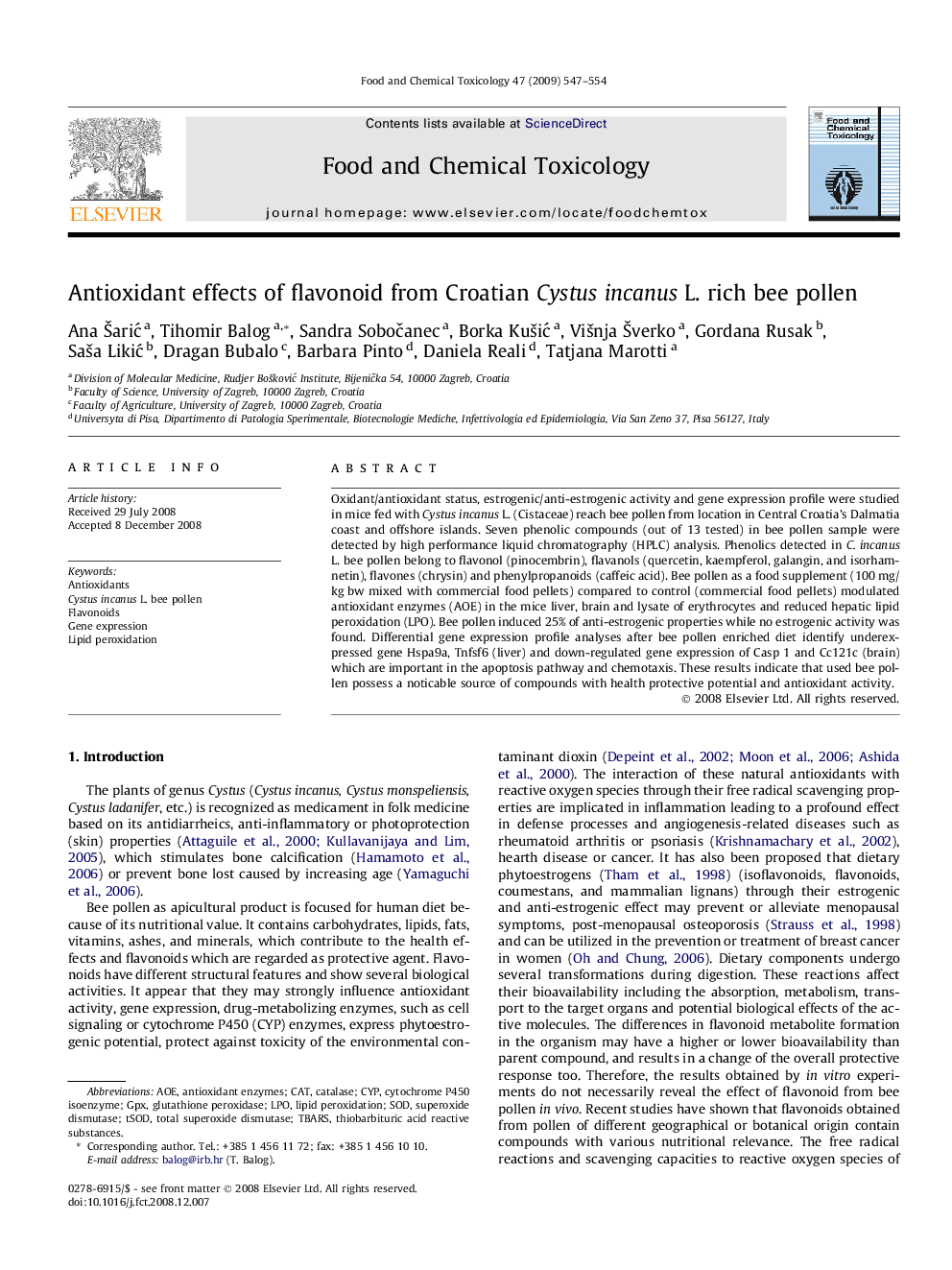| Article ID | Journal | Published Year | Pages | File Type |
|---|---|---|---|---|
| 2586533 | Food and Chemical Toxicology | 2009 | 8 Pages |
Oxidant/antioxidant status, estrogenic/anti-estrogenic activity and gene expression profile were studied in mice fed with Cystus incanus L. (Cistaceae) reach bee pollen from location in Central Croatia’s Dalmatia coast and offshore islands. Seven phenolic compounds (out of 13 tested) in bee pollen sample were detected by high performance liquid chromatography (HPLC) analysis. Phenolics detected in C. incanus L. bee pollen belong to flavonol (pinocembrin), flavanols (quercetin, kaempferol, galangin, and isorhamnetin), flavones (chrysin) and phenylpropanoids (caffeic acid). Bee pollen as a food supplement (100 mg/kg bw mixed with commercial food pellets) compared to control (commercial food pellets) modulated antioxidant enzymes (AOE) in the mice liver, brain and lysate of erythrocytes and reduced hepatic lipid peroxidation (LPO). Bee pollen induced 25% of anti-estrogenic properties while no estrogenic activity was found. Differential gene expression profile analyses after bee pollen enriched diet identify underexpressed gene Hspa9a, Tnfsf6 (liver) and down-regulated gene expression of Casp 1 and Cc121c (brain) which are important in the apoptosis pathway and chemotaxis. These results indicate that used bee pollen possess a noticable source of compounds with health protective potential and antioxidant activity.
